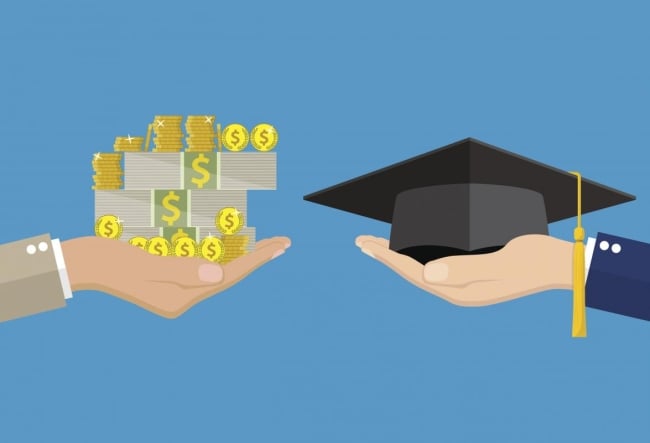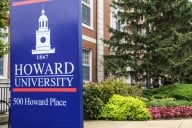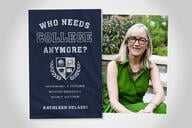You have /5 articles left.
Sign up for a free account or log in.

Istockphoto.com/drogatnev
Only about 60 percent of programs at private nonprofit institutions, and 70 percent of those at public colleges and universities, would pass the Obama administration’s gainful-employment test, if it were in place and applied to them, according to an online tool developed by a conservative Texas policy group.
Coming amid a stalemate over how to proceed with college accountability after Education Secretary Betsy DeVos repealed the gainful-employment rule in July, the tool made public by the Texas Public Policy Foundation was aimed in part to further the idea that public and nonprofit institutions -- and not just for-profit colleges -- should face scrutiny for how well graduates do financially.
The Obama administration rule subjected colleges and universities to a loss of financial aid funding if too large a share of their graduates do not make enough to repay their student debt. While nondegree programs at public and private nonprofit colleges were subject to the rule, it was controversial for being aimed primarily at for-profit institutions. In repealing the measure, DeVos said it unfairly targeted colleges and universities based on their tax status.
“As a country, we’ve only really applied the accountability metrics once, during the Obama administration,” Andrew Gillen, senior policy analyst in the foundation’s Center for Innovation in Education, said in a telephone interview. “What would happen if we applied the exact income and debt measures to other institutions?”
“What was shocking [was] how many programs are failing and how many students are attending those programs,” he said.
Based on the Department of Education’s College Scorecard data, the tool allows a search for the median income and debt of graduates at 40,000 college programs (one year out of college, controversially -- many college officials argue that taking such a short-term view is appropriate for vocational programs, but not for four-year degrees). Using similar standards to those in the gainful-employment rule -- based on the percentage of graduates’ income compared to their debt -- it judges whether programs would pass or fail the test or be on probation.
According to the web tool, private for-profit programs indeed do worse than public and private nonprofit programs in getting graduates jobs that pay enough so they are not overwhelmed by their student loans.
Only 5,646 of 10,147, or 55.6 percent, of private, for-profit programs for which income and debt data were available would have passed the standard. Another 2,071, or a fifth, would have failed. And 2,430, or 24 percent, of the programs would have been on probation. As with other types of institutions, data were not available for a large number of programs -- 10,633.
But private nonprofits didn’t do much better. Only 6,262 of 10,585 programs, or 59 percent, would have passed. Another 1,916, or 18 percent, would have failed. And 2,407, or 22.7 percent, would have been on probation. No information was available for 56,965 others.
Public institutions fared the best, with 14,234 of 20,216, or 70 percent, passing. Only 1,463, or 7.2 percent, of the programs failed. Another 4,519, or 22.3 percent, would have been on probation. Data were not available for 103,283 programs.
This indicates that a lot of the people asserting that for-profits are uniquely bad actors are wrong -- as a group, their performance is quite similar to that of nonprofits. Publics do noticeably better than either nonprofit private or for-profit colleges, no doubt because they generally cost less to attend and therefore their graduates have less debt.
In part, the tool is designed to make the Scorecard data accessible enough to let parents and high school students choose what programs to go to, Gillen said.
“If someone were to say they got into Harvard, should they go? People would say they should,” Gillen said. But according to the tool, Harvard’s dentistry program failed the test. A Harvard spokeswoman had no immediate comment.
But the Harvard School of Dental Medicine said in a statement, "Tools like this can be misleading when looking at gainful employment in the field of dentistry. It’s concerning that the data does not provide a comprehensive comparison of programs or take into account the career paths of graduates. Harvard School of Dental Medicine graduates go on to highly successful careers and residencies in competitive dental specialty programs, achieving earnings well beyond gainful employment requirements."
To Gillen, the tool would also help college administrators see how well programs are preparing students to get adequately paying jobs. But he said it could guide policy makers as well in withholding funding from underperforming programs.
It’s also intended to guide policy makers to restore but expand the idea of penalizing programs that leave students with too much debt, an idea nonprofit colleges generally oppose.
Differences by Discipline
Some programs were particularly problematic. Only 14 percent of law students graduated from programs that would pass, while almost 70 percent graduated from programs that would fail.
Because the College Scorecard data differ from what was used by the Education Department in implementing the gainful-employment rule, Gillen acknowledged making a number of technical adjustments.
Douglas Webber, director of graduate studies and an associate professor at Temple University department of economics and Institute for Labor Economics, and Robert Kelchen, an associate professor in Seton Hall University’s department of education leadership, management and policy, said in emails that Gillen’s methodology seemed “reasonable.”
For-profit colleges said the data showed they should not be singled out. “There are problematic programs in all sectors,” Steve Gunderson, president and CEO of Career Education Colleges and Universities, the association representing private for-profit institutions, said in a phone interview. However, he didn’t expect a break in the stalemate.
“The partisanship that has divided the country has entered higher education,” Gunderson said.
The College Affordability Act passed by Democrats on the House education and labor committee in October would restore the gainful-employment rule -- mainly affecting for-profit institutions.
Advocacy groups lamented that DeVos’s repeal of the gainful-employment rule removed accountability from low-performing for-profit institutions. "The gainful employment rule was a commonsense regulation that held schools accountable for delivering value to federal student loan borrowers. It applied to all career education programs, including those at public and nonprofit schools, as well as to for-profit degree programs where evidence demonstrated students had been suffering from terrible loan outcomes while owners and shareholders got rich on student loan dollars," Abby Shafroth, a National Consumer Law Center lawyer, said in a statement.
Lynn Pasquerella, president of the Association of American Colleges and Universities, said in a phone interview she’d be opposed to extending a gainful-employment rule to public institutions. The focus of the rule was on for-profit institutions because some misled students about being able to get high-paying jobs. Other accountability regimes, including boards of trustees and accreditors, at public and private nonprofit institutions, already protect students, she said.
Placing rules on public institutions “would further exacerbate the false narrative that the value of college relates only to employment,” she said.




